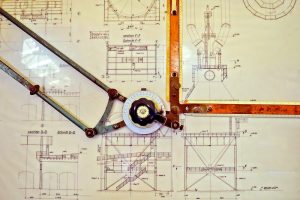
When it comes to lien rights on a construction project, design professionals are often in limbo. Typically, most of their work takes place before any construction actually begins. During the course of a project, these professionals sometimes take on a supervising role, managing the project for the owners (or for whomever hired them).
Regardless, much of their work is not the hands-on labor that many associate with mechanics liens. But that doesn’t necessarily mean that design professionals are without lien rights for the work on construction projects. In fact, many states allow design professionals to file lien claims, and there are other ways design professionals can secure payment in states where they don’t have lien rights. Please read on for the 5 questions design professionals must answer in order to secure their payments.
5 Questions for Design Professionals
1. Do you have lien rights?
When it comes guaranteeing payment, mechanics liens are the most powerful weapon in a construction business’ arsenal. If working on a project in a state where lien rights are available to them, design professionals should take the necessary steps to secure their lien rights.
This means sending the required notices, using the correct forms, and obeying all the deadlines that apply. In states where licensing is required for professional design work, it’s important to make sure that licensing has been obtained. Often, unlicensed parties cannot file lien claims. Plus, it’s just generally a good idea. In any event, in states where it’s unclear whether design, artisan, or professional work has valid lien rights, it’s best to consult a construction attorney.
Free Resource
Have a legal question?
Click here to visit the Construction Legal Center,
a free online resource where you can get answers to your construction payment questions.
2. Who did you contract with?
Lien rights and the required notices often depend on the claimant’s project role. And your role is usually determined by who hired you on the project. This means that, depending on who you contracted with, different requirements may apply. In many states, only those design professionals who have contracted directly with the owner may file liens. Other times, when hired by a general contractor, a design professional may be treated just as any other subcontractor.
3. What type of work did you perform?
Mechanics lien rights often hinge on the definition of “improvement.” For design professionals, the question of where their work meets the definition of an improvement can be tricky. If the design work is complete before construction actually begins, it’s easy to imagine an argument that the work did not actually improve the property. This gets especially tricky if a design professional performed work and goes unpaid, but the project is terminated. Valuable work may have been performed, but it’s entirely possible that the design work does not qualify for a mechanics lien since the property was not actually improved. This situation is handled differently in each state – you should consult with a construction lawyer in yours for guidance on this question.
4. Where was your work performed?
At least on public projects, where the work was actually done could be crucial. The definition of “labor” can get confusing under the Miller Act which regulates payments for federal construction projects.
However, usually some level of physical exertion must be involved. For instance, a professional supervising work might qualify for protection under the Miller Act if the work is done on site and some manual labor is involved. But duties largely unrelated to construction work – such as light cleaning of an office or bathroom- won’t qualify as labor, even when paired with duties like negotiating contracts and preparing bids.
5. Is Another Type of Lien Available?
Some states have combatted the issue by allowing other types of liens. Look at California– design professionals in the Golden State can avail themselves to a design professional lien. In Utah, pre-construction service liens are available as well as construction service liens (check out the Utah provisions here). Plus, if they qualify, these professionals may be able to file a mechanics lien, too! Unfortunately, though, the “other” liens previously mentioned aren’t available in most states.
Life Without Liens
Recovering payment may be a lot easier when liens are in play, but there are other routes to recovery. One potential route is to file a lawsuit, and there are plenty of opportunities to assert claims outside of mechanics liens. This could be a breach of contract claim, an unjust enrichment claim, or some other avenue. However, because a lien attaches to the property where work was done, mechanics liens are the most powerful tool available in construction payment. That’s why it’s so important to stay on top of your state’s lien and notice requirements deadlines. By preserving your ability to lien, you’re ensuring when push comes to shove, you have the tools to succeed.


